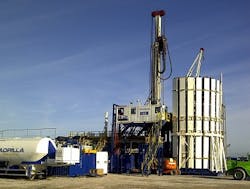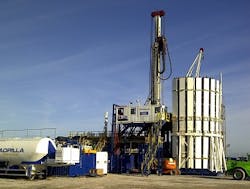DURHAM, N.C. - Multiple concerns have been raised in the past over the chemicals used and subsequent wastewater generated during the hydraulic fracturing, known as fracking, process.
Yet a new study from Duke University suggests that naturally occurring brines, not man-made fracking fluids, account for most of the wastewater coming from hydraulically fractured unconventional oil and gas wells.
Published in the journal – Science of the Total Environment – the findings revealed that more than 92% of the flowback and produced water - or wastewater - coming from the wells is derived from naturally occurring brines that are extracted along with the gas and oil.
However, researchers warned that these brines still carry their own risks, as they contain varying levels of salts, heavy metals and naturally occurring radioactive elements, and their sheer volume makes disposing of them a challenge.
Three statistical techniques were used by the Duke University research team to quantify the volume of wastewater generated from unconventional oil and gas wells in six basins nationwide.
This included the Bakken formation in North Dakota; the Marcellus formation in Pennsylvania; the Barnett and Eagle Ford formations in Texas; the Haynesville formation in Arkansas, Louisiana and East Texas; and the Niobrara field in Colorado and Wyoming.
Among other findings, the new study shows that the median volume of wastewater produced by an unconventional oil or gas well ranges from 1.7 to 14.3 million liters per year over the first five to 10 years of production.
The volume of produced water coming from these wells declines over time, while its salinity increases. Salt levels rise much faster than the volume declines, resulting in a high volume of saline wastewater during the first six months of production. After that, the volume of wastewater produced by a well typically drops, along with its hydrocarbon output, the researchers said.
Avner Vengosh, professor of geochemistry and water quality at Duke’s Nicholas School of the Environment, said: “Much of the public fear about fracking has centered on the chemical-laden fracking fluids - which are injected into wells at the start of production - and the potential harm they could cause if they spill or are disposed of improperly into the environment.
“Our new analysis, however, shows that these fluids only account for between 4 and 8% of wastewater being generated over the productive lifetime of fracked wells in the major U.S. unconventional oil and gas basins. Most of the fracking fluids injected into these wells do not return to the surface; they are retained in the shale deep underground.”
He added: “This means that the probability of having environmental impacts from the man-made chemicals in fracking fluids is low, unless a direct spill of the chemicals occurs before the actual fracking.”
###
Read more
Fracking wastewater management: Is centralised treatment the way forward?



